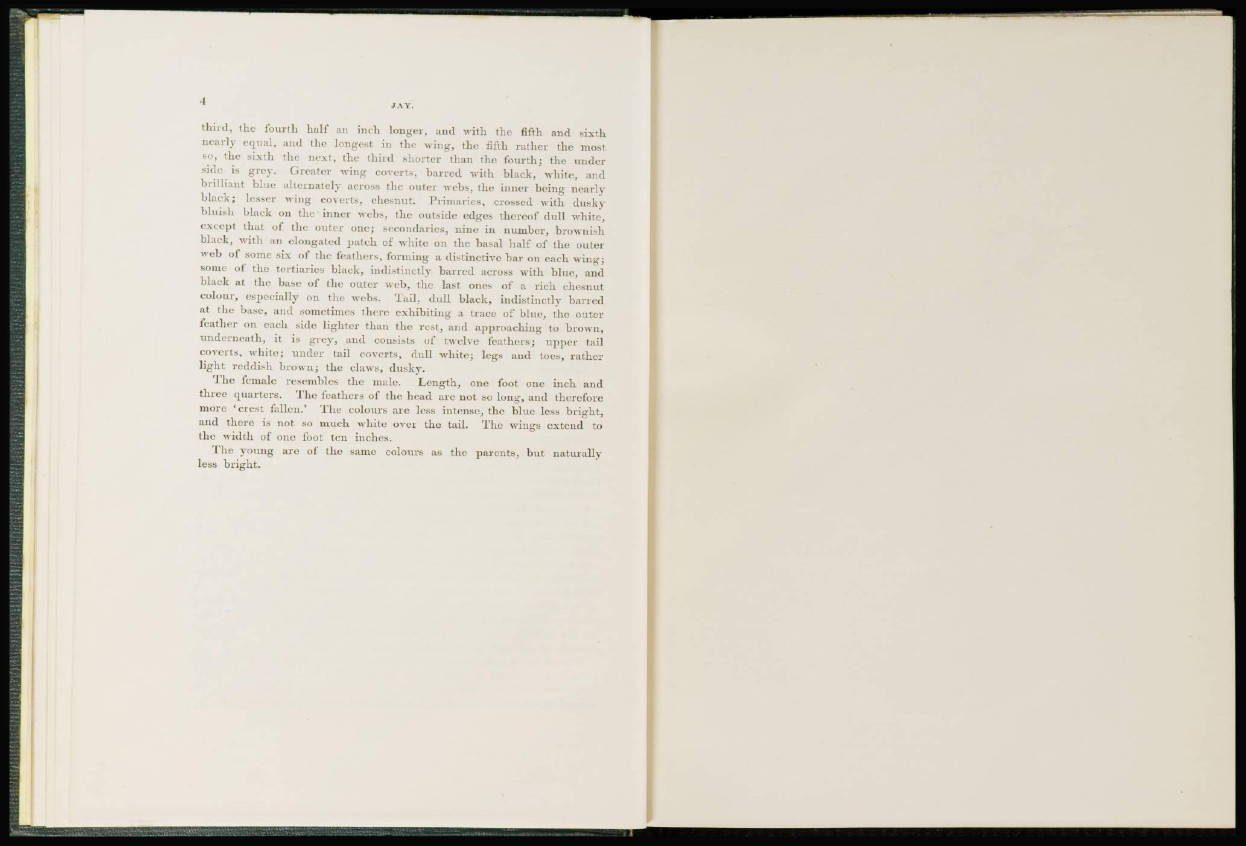
third, the fourth half an inch longer, and with the fifth and sixth
nearly equal, and the longest in the wing, the fifth rather the most
so, the sixth the next, the third shorter than the fourth; the under
side is grey. Greater -wing coverts, barred with black, white, and
brilliant blue alternately across the outer webs, the inner being nearly
black; lesser wing coverts, chesnut. Primaries, crossed with dusky
bluish black on the inner webs, the outside edges thereof dull white,
except that of the outer one; secondaries, nine in number, brownish
black, with an elongated patch of white on the basal half of the outer
web of some six of the feathers, forming a distinctive bar on each wing;
some of the tertiaries black, indistinctly barred across with blue, and
black at the base of the outer web, the last ones of a rich chesnut
colour, especially on the webs. Tail, dull black, indistinctly barred
at the base, and sometimes there exhibiting a trace of blue, the outer
feather on each side lighter than the rest, and approaching to brown,
underneath, it is grey, and consists of twelve feathers; upper tail
coverts, white; under tail coverts, dull white; legs and toes, rather
light reddish brown; the claws, dusky.
The female resembles the male. Length, one foot one inch and
three quarters. The leathers of the head are not so long, and therefore
more 'crest fallen.* The colours are less intense, the blue less bright,
and there is not so much white over the tail. The wings extend to
the width of one foot ten inches.
The young are of the same colours as the parents, but naturally
less bright.